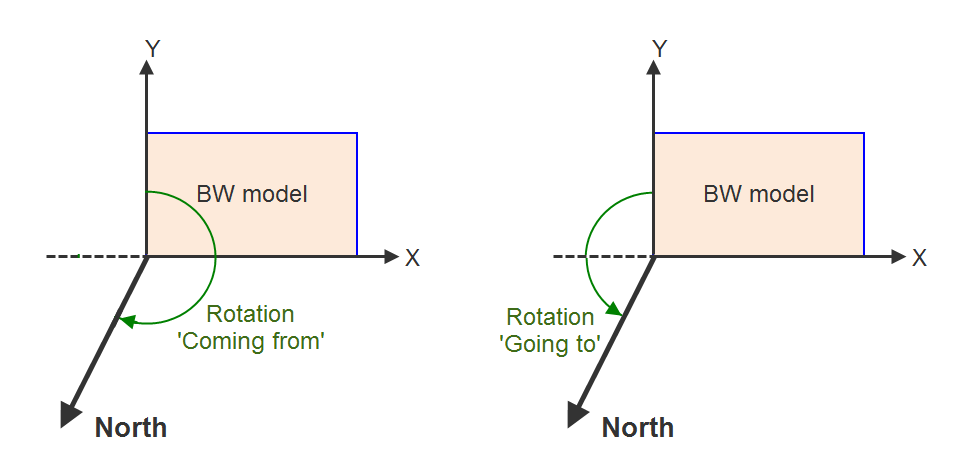
Waves coming from/going to actual direction
Definition of wave direction. The most common standard is “waves coming from” (default).
Use spreading or spectrum (dfs0-type only)
Selection of type of output:
· directional spreading function (default)
· directional spectrum
Orientation (dfs2-type data only)
The default orientation is taken from model orientation. Alternatively you specify UTM north as orientation.
Number of directions and directional resolution
The default number of directions is 36, which results in a directional resolution of 10 degrees.
Rotation (dfs0-type data only)
You may change the default rotation (0 degrees) to a value representing the true north direction. This is particularly relevant for dfs0-type input as the data format does not include information on the orientation of the co-ordinate system where the velocities (or fluxes) refer.
The value of the rotation angle depends on the chosen convention of the wave direction.

Figure 5.8 Definition of rotation angle
Left: Rotation angle when wave direction is ‘Coming from’
Right: Rotation angle when wave direction is ‘Going to’